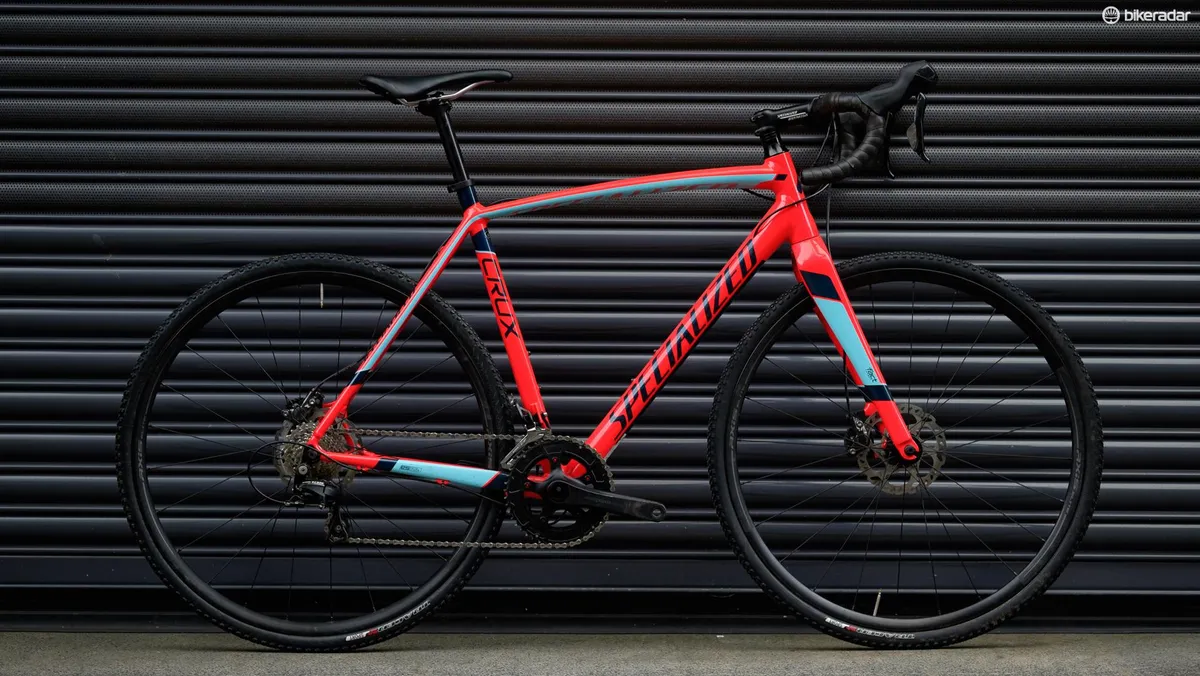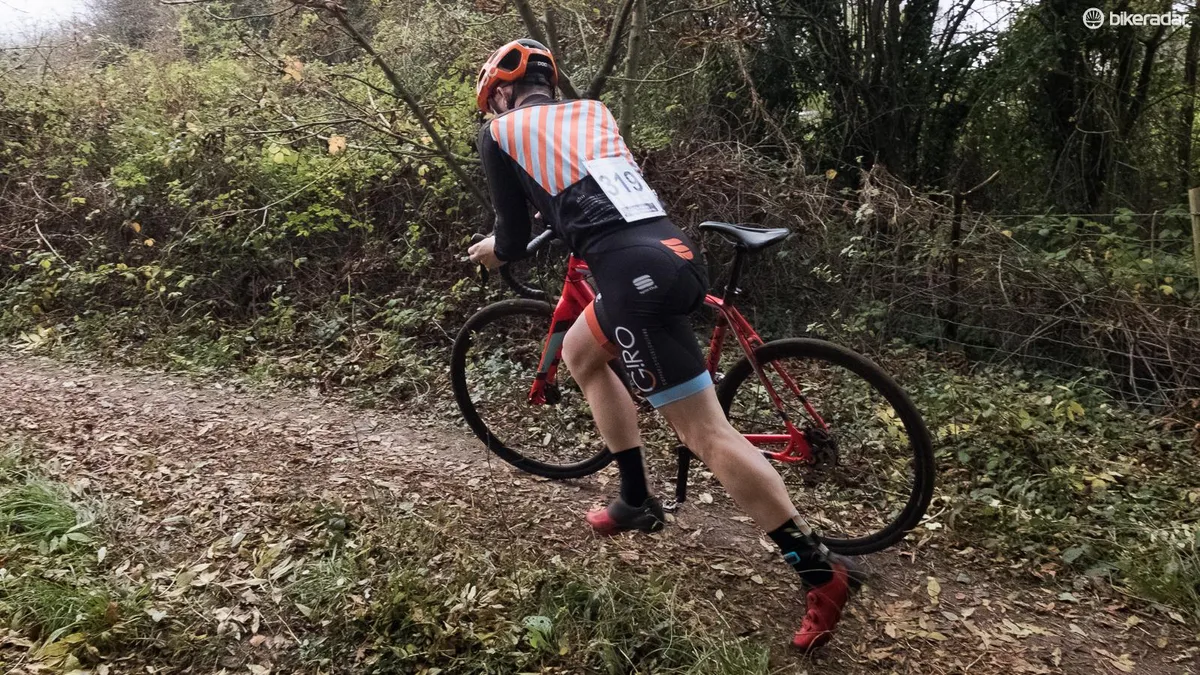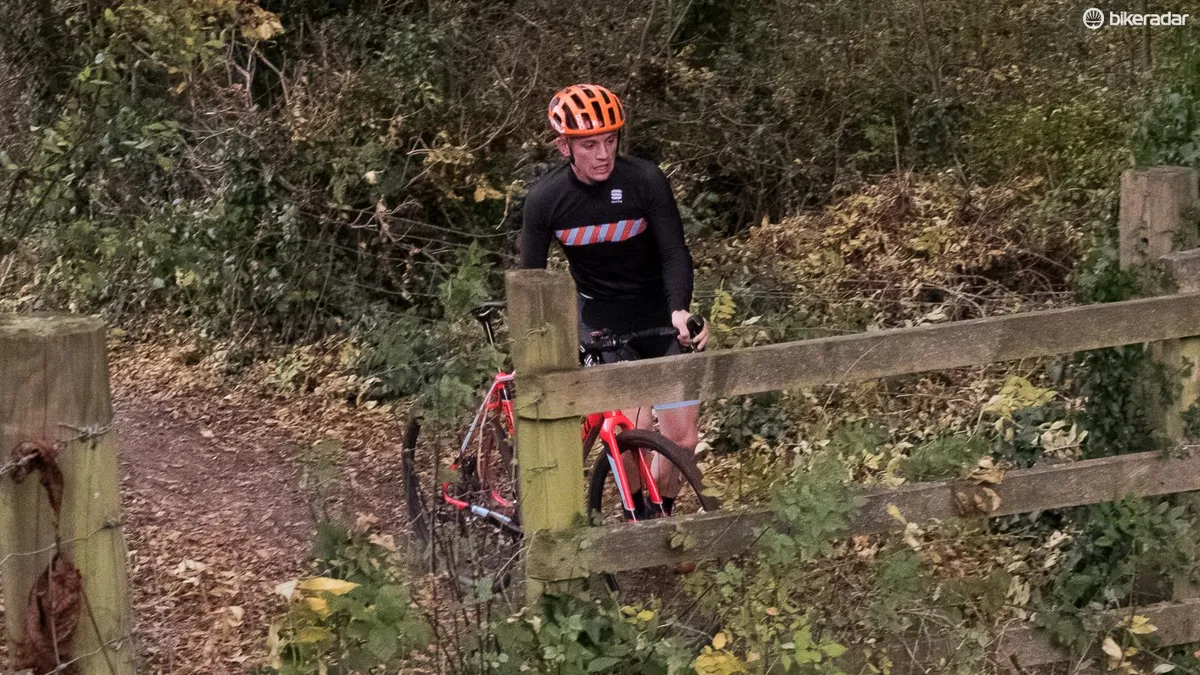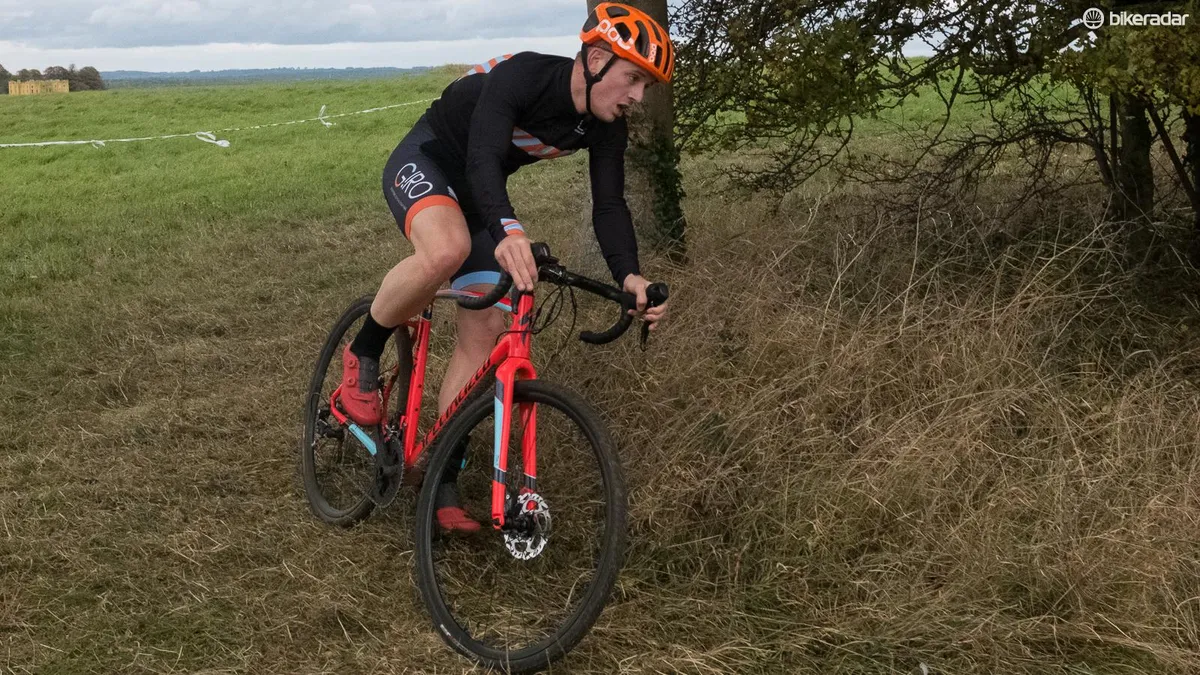Last autumn, as the nights began to draw in, a friend and colleague at BikeRadar suggested I have a go at racing cyclocross. Due to limited spare time, I would be dedicating a few hours a week to training and half a day on the weekends to the races themselves. How hard could it be? As it turns out, cyclocross is no walk in the park.
Coming from a road background, my off-road ability was limited to say the least and I had never even ridden a cyclocross bike. Looking for a bike ready to ride out of the box, I wanted something that offered good value for money, but was still more than capable of being raced.
Based in Bristol, the Western Cyclocross League offered me the option to compete in at least half of its series within a thirty-minute drive of my home. The league also grids U23s, seniors and occasionally the women's and veterans' races at the same time.
With no race categories — or the egos that are often associated with them in road racing — you could be racing alongside a complete novice (like me) all the way up to the British senior men’s National Champion (that actually happened).
- The course: The Western Cyclocross league, 2016–2017
- The horse: Specialized CruX Sport E5 aluminium with Shimano 105 and hydraulic discs
- The objective: Winter racing, training and learning a new discipline

Let racing commence
The cold and crisp British autumn continued late into 2016 and in turn the ground remained dry well into October. My first ride impressions of the bike were that it was a harsh ride. The aggressive geometry, combined with the stiff aluminium tubing and the hard ground meant that I felt every rock, root and rut under the wheels, even with tyre pressures below 30psi.
On the other hand, this combination resulted in a very, very responsive ride and the bike felt both manoeuvrable and lightweight. Picking the correct line on technical climbs, and being able to dodge smaller obstacles and bunny hop any larger ones on descents, instantly put a smile on my face.
Race #1: Netham Park, Bristol
- Result: 21 out of 46
- Crashes: one
Apart from a slightly embarrassing crash where I lost the front wheel on a flat, tame corner, I was more than happy with the result in my first ever ‘cross race.
An overenthusiastic entry into a sweeping left corner at the end of the opening lap saw me on the floor for the third consecutive race
Lessons were learnt in weight distribution on the bike when cornering (don’t have your weight over your front wheel on a slippery corner kids), as well as being disciplined in using all of the available gearing over the varied terrain.
The CruX Sport is equipped with double chainrings on the front of the bike, which is an increasingly rare sight with many racers moving to 1x set ups. This was most useful on a short but steep ramp on the Netham Park course, which, when dumping your gear to the little ring, meant you could dance up the incline with relative ease.
I overtook competitors on this section almost every lap and being able to utilise a little ring definitely made a difference on this section. Doubles ain’t dead, brother.
Race #2: Stroud Leisure Centre, Stroud
- Result: 21 out of 46
- Crashes: two and a half
The mixed terrain of this course included tarmac, long stretches on grass and some technical and rooty singletrack through the edge of a wooded area. There was another short, sharp incline that required the use of the inner chainring, although this particular incline was scattered with slippery tree roots. My inadequate bike handling skills cost me two places on the final lap here — choosing the wrong line and losing the front wheel underneath me.
This mistake highlighted the importance of bike handling skills in cyclocross and not just fitness. Spending sessions during the week repeatedly approaching a short, technical ascent can pay off massively on a race day, but it could be that you have to take on a technical section in a race every lap for ten or more laps. So taking the time to practice technical drills definitely pays off in the long run and is by no means completely at the cost of fitness.

Race #3: Purdown, Bristol
- Result: 17 out of 45
- Crashes: one
One long, narrow climb defined this otherwise flat course. The narrow path resulted in a bottleneck on the opening lap and was the first time I had to shoulder the CruX.
While running with your bike is pretty much an inevitability in cyclocross, it’s by no means the be all and end all of a race. I was concerned I should be adding running to my weekly training, but looking at the courses I faced throughout the season, time spent on the bike and specifically focussing on technical ability outweighed running skill.
Wet grass on the remainder of the Purdown course resulted in what was essentially a punishing time trial because the terrain and the course rarely hindered overtaking.
An overenthusiastic entry into a sweeping left corner at the end of the opening lap saw me on the floor for the third consecutive race, further highlighting my technical inability. I never did take it quite as fast, but my overall efforts were an improvement in results and saw me break into the top twenty.
Race #4: Lockleaze, Bristol
- Result: 16 out of 46
- Crashes: zero!
The Lockleaze round of the Western Cyclocross League was my best result of the season, a long draggy climb on grass meant those who didn’t mind climbing generally placed well and those that suffered did not.
The course began relatively dry and suited the set up and geometry of the bike well. It was responsive to the several tight corners and excellent power transfer, combined with good gear ratios on the long climbs.
It was this course in particular that highlighted the importance of pacing and focussing on your own race. Although only an hour long, you can easily overcook things in the opening 15 minutes of a race and ensuring you don’t go into the red too early is vital.
Race #5: Former Cadbury Factory, Keynsham
- Result: 36 out of 71
- Crashes: zero
In the grounds of the former Cadbury’s chocolate factory in Keynsham, the most technically demanding and for me, the most challenging course of the season.
A relentless amount of 180-degree switchback turns, off camber and slippery mud banks [insert appropriate chocolate joke here] and a full in-and-out spiral ensured that those whose bike handling skills have room to be sharpened suffered, and suffered I did.
Although the field was the largest of the season, a midpack result was my worst placed finish. As the ground became softer later in the season, I switched the tyres to a set of Challenge Baby Limus. The tyres certainly helped on the off camber muddy bank, which I managed to ride without falling off, but there was an element of speed lost in the long, uncut grass of the venue.
The Baby Limus would have excelled on a muddier course, but on the grassy course I fear I should have stuck with the original Tracer Sport tyres.
Conclusions

The horse
The enjoyment I got out of the Specialized CruX Sport was on par with the first road bike I bought when I turned 13. It opened up a completely new aspect of the sport to enjoy, an emotion I certainly wasn’t expecting to experience again.
The course
The Western Cyclocross League offers exceptionally well-organised events and due to the nature of cyclocross racing, the events don’t take a whole day of your weekend up. Depending on the locality of the race, they can take as little as three hours out of your weekend, keeping your loved ones happy!
For those new to cyclocross, the fact that the events happen in an off-road and safe place mean that it can be a great place to challenge yourself for those uncomfortable racing on the road. Junior, women’s, senior and veteran’s races all happen on the same course throughout the morning and this can be a great opportunity to get your whole family racing and at the very least, spectating/heckling!
I enjoyed my time on the Specialized CruX so much that I’m currently crunching numbers to try and buy the exact bike for the upcoming summer cyclocross league and subsequent winter leagues.
The only drawback to the bike I can think of is that, for some, the racy geometry and stiff characteristics of the bike may be too harsh and there will be more suitable, comfortable options out there. For me however, it was near perfect.
Those with a larger budget may want to opt for a carbon option to benefit from less weight, but for stiffness and responsiveness you will not be disappointed with the aluminium CruX.
If you fancy giving cyclocross a go yourself, you can find your local leagues here:
- UK: www.britishcycling.org.uk/getintocyclo-cross
- USA: www.usacycling.org/how-to-start-racing-cyclo-cross
- Australia: www.mtba.asn.au/calendar
Updated 28 August 2017
